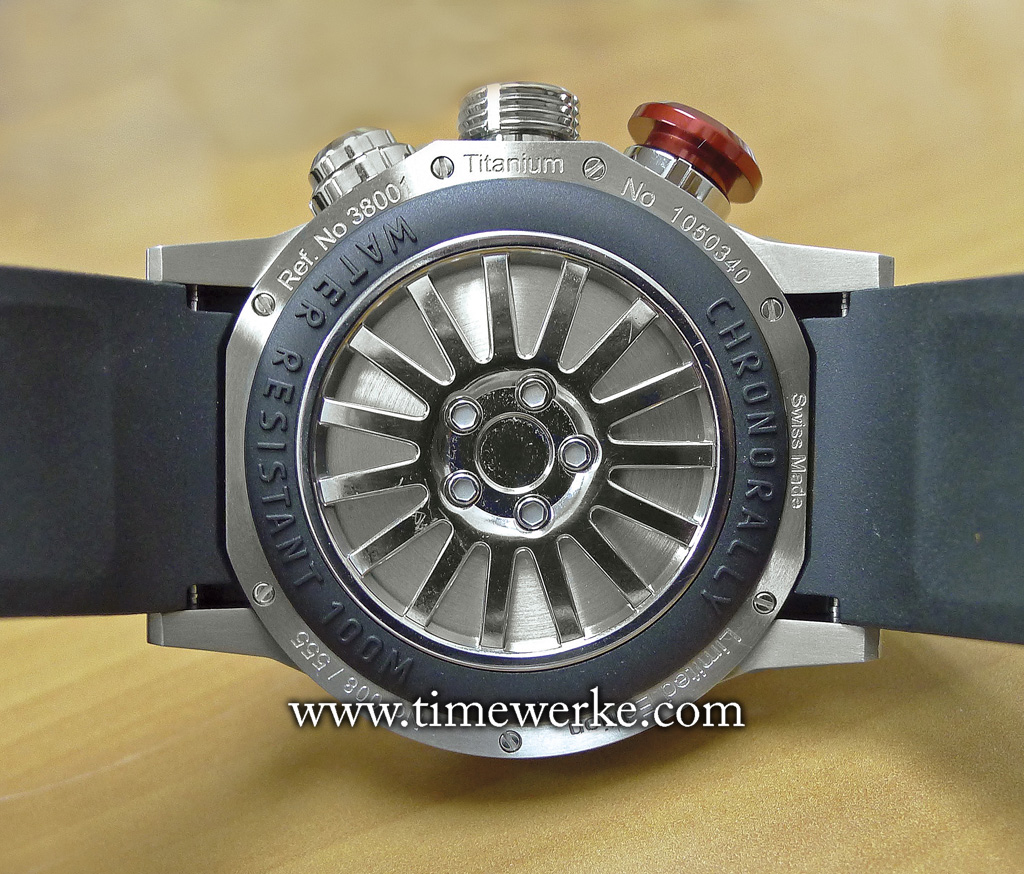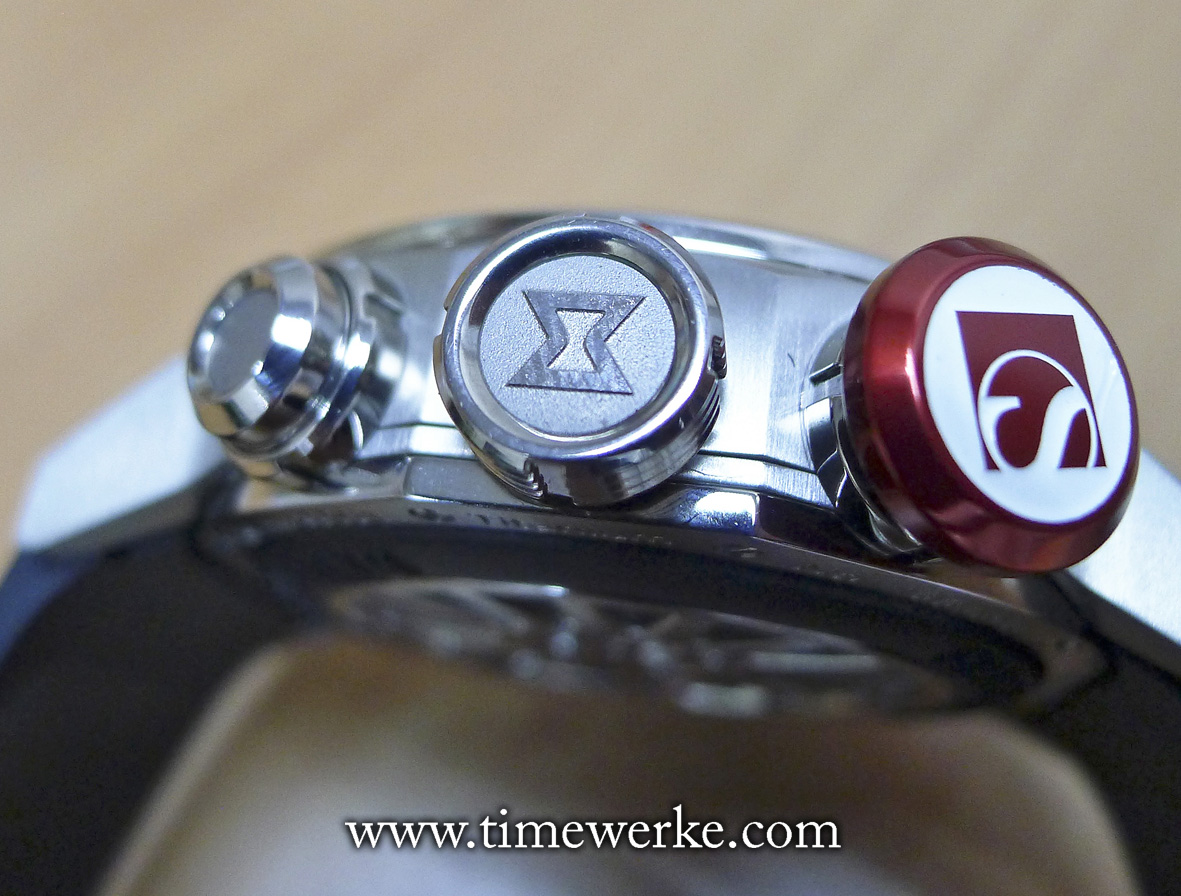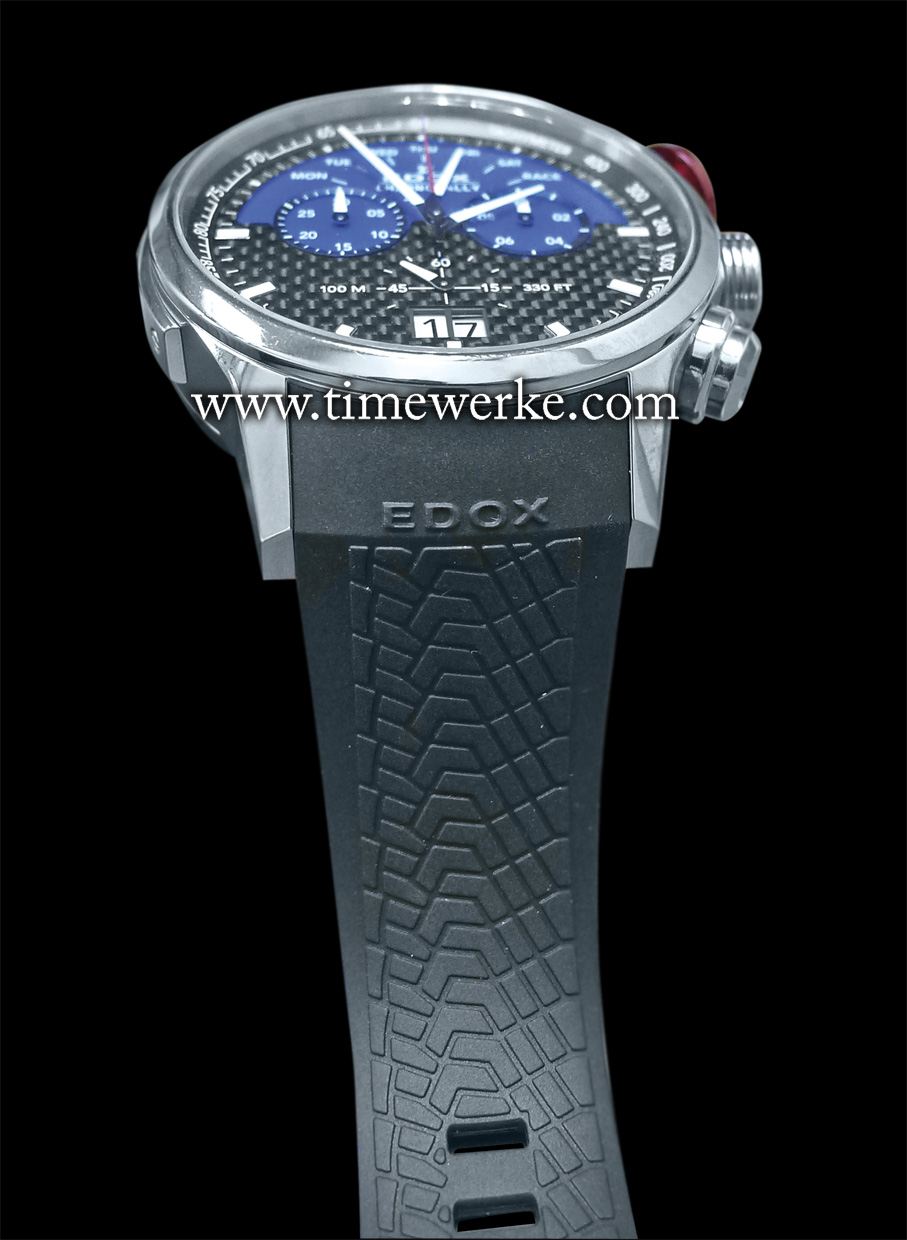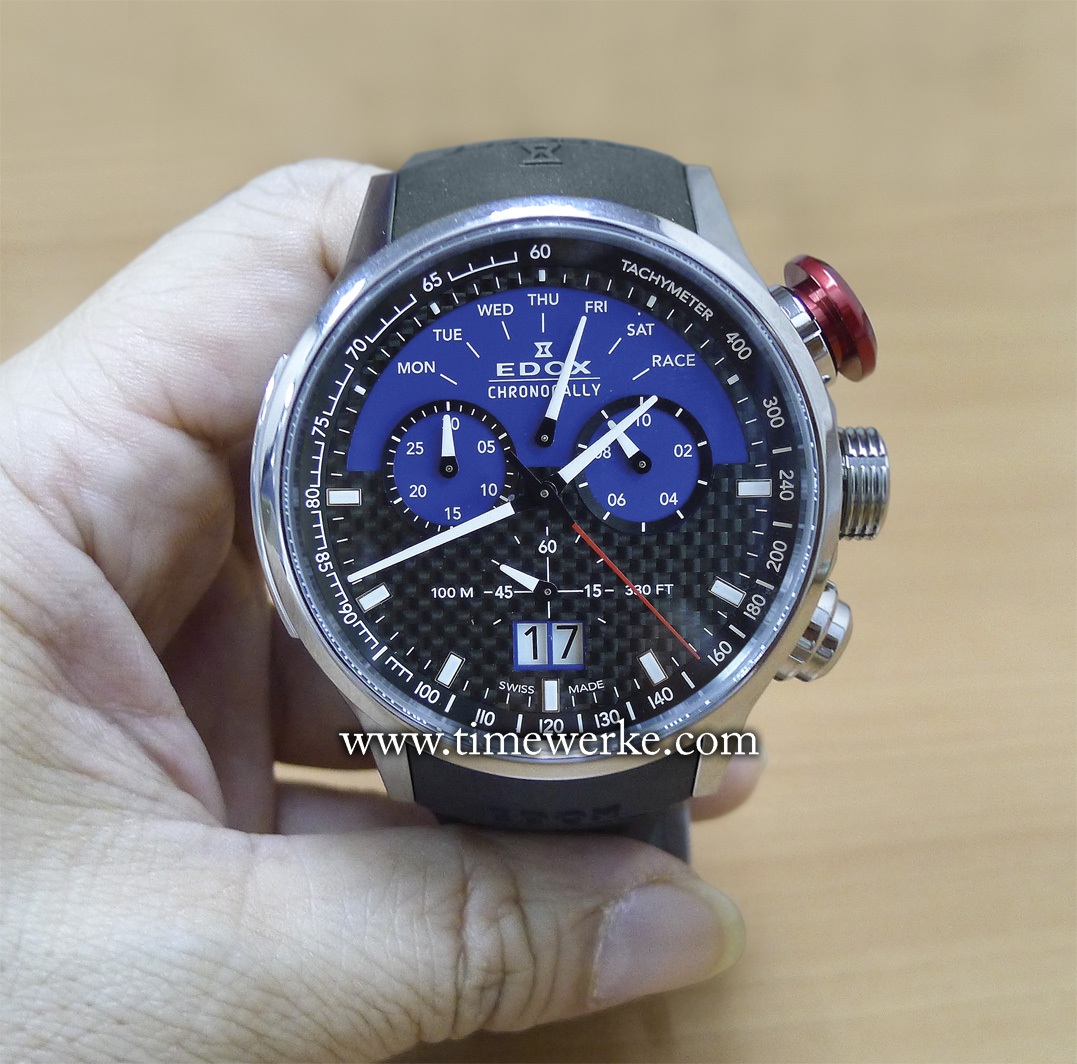
Edox Sauber F1 Team Chronorally Limited Edition. Introduced in 2016, it houses the Ronda 8040.N quartz movement with the chronograph function, chronograph split time function and the big date display. It has a black carbon fibre dial with the blue being the team colour of the Sauber F1 Team (Sauber C35 Blue) and its 48mm diameter case is in titanium. Water-resistant to 100 metres. Limited to 555 pieces. Priced at SGD2,541.25 inclusive of tax (SGD2,375 before tax). Photo: © TANG Portfolio.
The Edox Sauber F1 Team Chronorally Limited Edition, launched in 2016, is the official watch of the Sauber Formula One Team.
The Ronda Calibre 8040.B quartz movement is used for the Edox Sauber F1 Chronorally. It features the large date display at the 6 o’clock position alongside the continuous sweep seconds counter and has a retrograde day of the week display at 12 o’clock.
The Edox Sauber F1 Team Limited Edition has a black carbon fibre dial and the blue on the upper half is the team colour of the Sauber Formula One Team.
What is noteworthy is that this Edox Sauber F1 Chronorally features what is termed the “split time” function. What does “split time” mean?
Before we answer that, do note that in addition to the split time in this Ronda 8040.B quartz chronograph, there is also the “add” function and mention of the “interval timing” feature.
What is this “add” function? Besides the basic start, stop and reset of the chronograph, there is the “accumulated timing” for the chronograph.
This basically means one can start the chronograph, stop it to measure the elapsed time, and continue with the timing, thereby adding on to what was already recorded, all controlled by the oversized red pusher at 2 o’clock. This is probably what is meant by the chronograph “add” function.
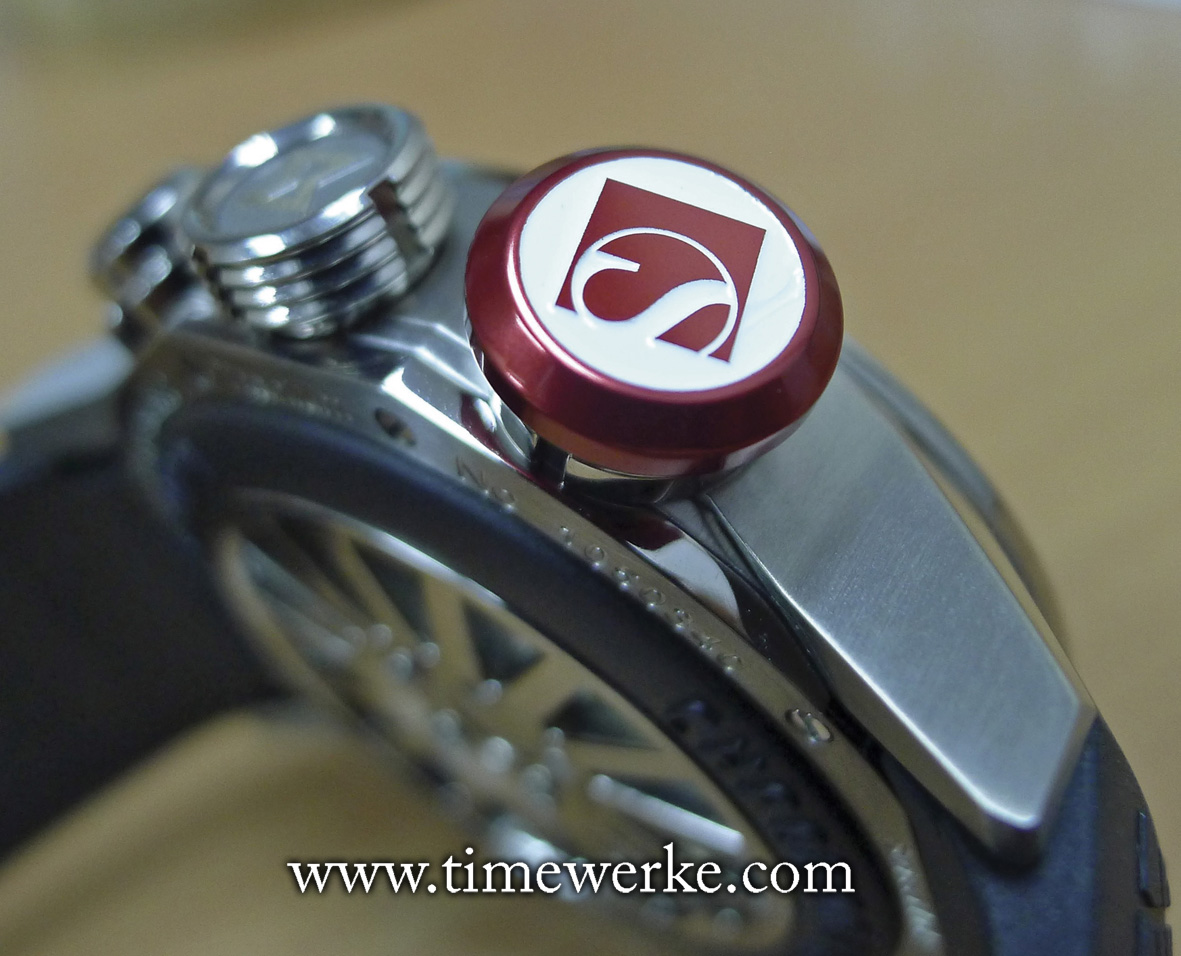
The oversized red chronograph pusher at 2 o’clock features the Sauber logo. Photo: © TANG Portfolio.
For the immediate or interval timing, one can start the chronograph with the oversized pusher at 2 o’clock, display the elapsed time at a certain point by activating the pusher at 4 o’clock (rather than the red 2 o’clock pusher) to allow the chronograph timing to continue running (in the background).
In other words, the chronograph is still recording elapsed time from the start of the first activation even though the red chronograph seconds hand is stationery.
To reactivate the red chronograph seconds hand, the pusher at 4 o’clock is once again activated and it will advance (catch up or jump) to the ongoing measured time. This is the chronograph “intermediate or interval timing”.
To proceed with this “interval timing”, stop the chronograph with the pusher at 4 o’clock and continue with this process.
To finally stop the timing, activate the oversized pusher at 2 o’clock. To reset, the pusher at 4 o’clock will have to be activated.
The ability to allow the chronograph to continue with timing is probably what is termed the chronograph “split time” function.
With this “split-time” function, the Edox Sauber F1 Chronorally is technically a split-seconds chronograph.
In mechanical split-seconds chronographs, there are two chronographs seconds hands, one atop the other and this function is used for timing two events that start at the same time but have different end times.
When the split-seconds is activated, one chronograph seconds hand is halted and the other “splits” or separates from the first and continues with the timing.
Should there be multiple time readings, the stopped chronograph seconds hand can “catch up” and rejoin with the one that is still timing the event. This can continue until the chronograph is finally stopped and reset.

